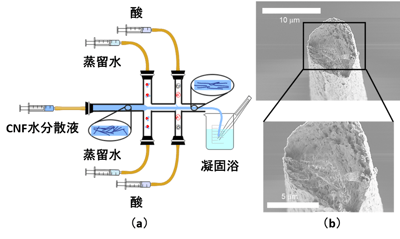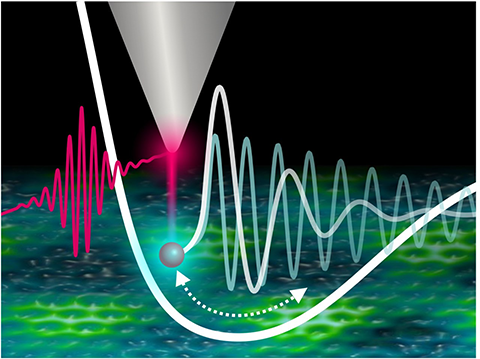火星での生命発見の可能性は、これまでの予想よりも高いとする新たな研究結果が発表された New study finds the chances of uncovering life on Mars are better than previously expected
2022-10-25 ノースウェスタン大学
この発見は、もし火星で生命が進化していたならば、その生物学的な痕跡が、ExoMars(ロザリンド・フランクリン探査機)やMars Life Explorer(地下2メートルから物質を採取するドリルを搭載)など、将来のミッションで明らかになる可能性を強めている。
火星の環境は過酷で容赦がない。中緯度の平均気温は華氏-80度(摂氏-63度)で、乾燥と凍結のため、赤い惑星は生命にとって過酷な環境であるように思われる。火星はまた、銀河系からの強い宇宙線と太陽の陽子線に常にさらされている。
このような条件下で生命が生存できるかどうかを調べるため、研究者たちは、まず微生物生命の電離放射線生存限界を決定した。次に、6種類の地球上のバクテリアと菌類を、凍結して乾燥した火星表面のシミュレーションにさらし、ガンマ線または陽子線(宇宙での放射線を模倣)を照射した。
研究者たちは、丈夫な微生物の1つであるデイノコッカス・ラジオデュランス(愛称「コナン・ザ・バクテリウム」)が、火星の厳しい環境を生き抜くのに特に適していることを突き止めたのだ。この新しい実験では、コナンは凍てつくような乾燥した環境の中で天文学的な量の放射線を生き延び、地球上で数百万年生存できるバチルス胞子よりもはるかに長生きしたのである。
今回の研究では、このたくましいバクテリアが、火星の環境に典型的であろう、乾燥、冷凍され、深く埋められた状態では、14万グレイの放射線に耐えることができることが判明した。この線量は、人間が死ぬ量の28,000倍である。
コナン・ザ・バクテリウムは、地表で紫外線を浴びても数時間しか生きられないが、火星の地表の真下で日陰に入ると、その寿命は劇的に延びる。火星表面からわずか10cmの深さに埋めると、コナン・ザ・バクテリウムの生存期間は150万年まで延びる。さらに、10メートル下に埋めると、このカボチャ色のバクテリアはなんと2億8000万年も生き延びることができる。
この驚異的な生存率の高さは、バクテリアのゲノム構造のおかげであることが、研究者らによって明らかにされた。長い間疑われていたことだが、研究者たちは、コナン・ザ・バクテリウムの染色体とプラスミドが互いにリンクし、完璧に整列した状態を保ち、強い放射線の後でも修復可能な状態になっていることを発見した。
つまり、もしコナン・ザ・バクテリウムと同じような微生物が、火星で最後に水が流れた時代に進化したのであれば、その生きた跡が地下深くにまだ眠っている可能性がある。
<関連情報>
- https://news.northwestern.edu/stories/2022/10/ancient-bacteria-might-lurk-beneath-mars-surface/
- https://www.liebertpub.com/doi/10.1089/ast.2022.0065
乾燥と凍結が微生物の電離放射線生存率に与える影響:火星サンプルリターンのための考察 Effects of Desiccation and Freezing on Microbial Ionizing Radiation Survivability: Considerations for Mars Sample Return
William H. Horne,Robert P. Volpe,George Korza,Sarah DePratti,Isabel H. Conze,Igor Shuryak,Tine Grebenc,Vera Y. Matrosova,Elena K. Gaidamakova,Rok Tkavc,Ajay Sharma,Cene Gostinčar,Nina Gunde-Cimerman,Brian M. Hoffman,Peter Setlow and Michael J. Daly
Astrobiology Published::25 Oct 2022
DOI:https://doi.org/10.1089/ast.2022.0065

Abstract
Increasingly, national space agencies are expanding their goals to include Mars exploration with sample return. To better protect Earth and its biosphere from potential extraterrestrial sources of contamination, as set forth in the Outer Space Treaty of 1967, international efforts to develop planetary protection measures strive to understand the danger of cross-contamination processes in Mars sample return missions. We aim to better understand the impact of the martian surface on microbial dormancy and survivability. Radiation resistance of microbes is a key parameter in considering survivability of microbes over geologic times on the frigid, arid surface of Mars that is bombarded by solar and galactic cosmic radiation. We tested the influence of desiccation and freezing on the ionizing radiation survival of six model microorganisms: vegetative cells of two bacteria (Deinococcus radiodurans, Escherichia coli) and a strain of budding yeast (Saccharomyces cerevisiae); and vegetative cells and endospores of three Bacillus bacteria (B. subtilis, B. megaterium, B. thuringiensis). Desiccation and freezing greatly increased radiation survival of vegetative polyploid microorganisms when applied separately, and when combined, desiccation and freezing increased radiation survival even more so. Thus, the radiation survival threshold of polyploid D. radiodurans cells can be extended from the already high value of 25 kGy in liquid culture to an astonishing 140 kGy when the cells are both desiccated and frozen. However, such synergistic radioprotective effects of desiccation and freezing were not observed in monogenomic or digenomic Bacillus cells and endospores, which are generally sterilized by 12 kGy. This difference is associated with a critical requirement for survivability under radiation, that is, repair of genome damage caused by radiation. Deinococcus radiodurans and S. cerevisiae accumulate similarly high levels of the Mn antioxidants that are required for extreme radiation resistance, as do endospores, though they greatly exceed spores in radioresistance because they contain multiple identical genome copies, which in D. radiodurans are joined by persistent Holliday junctions. We estimate ionizing radiation survival limits of polyploid DNA-based life-forms to be hundreds of millions of years of background radiation while buried in the martian subsurface. Our findings imply that forward contamination of Mars will essentially be permanent, and backward contamination is a possibility if life ever existed on Mars.
Highlights
- Ionizing radiation survivability of polyploid microorganisms that accumulate Mn antioxidants (H-Mn) is greatly increased by desiccation and freezing.
- Ionizing radiation resistance of desiccated and frozen D. radiodurans cells far exceeds radiotolerance of Bacillus spores commonly used to gauge bioburden levels in forward planetary protection.
- Radioresistance of D. radiodurans relies jointly on accumulation of H-Mn antioxidants and the presence of multiple genome copies linked by Holliday junctions.
- Desiccated and frozen D. radiodurans survive ionizing radiation doses equivalent to hundreds of millions of years of background radiation on Mars, with implications for the possibility that dormant life endures there.
- Implications are presented regarding both forward and backward planetary contamination by Mars missions and sample return.



